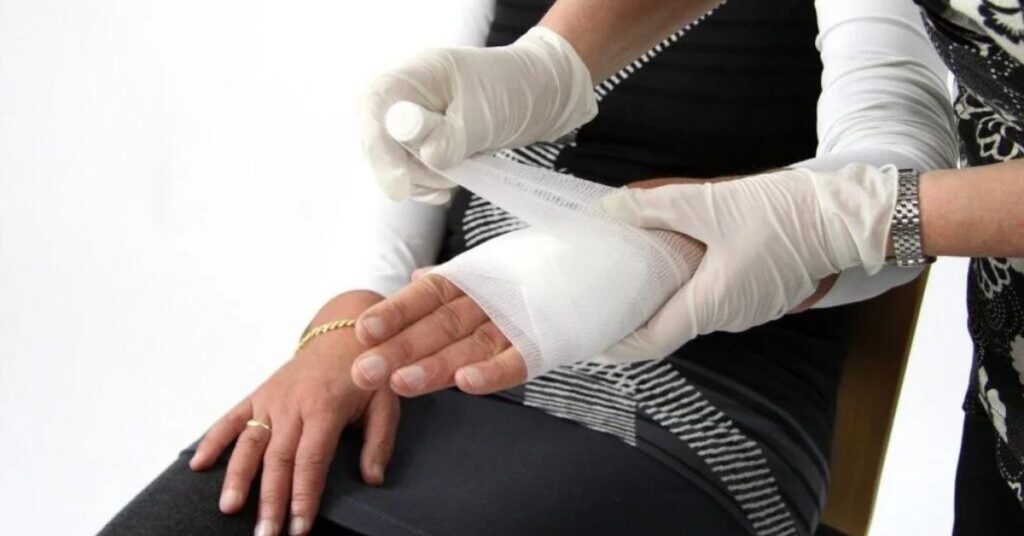First Aid for Burns is a crucial aspect of emergency response and it’s something that encompasses various classifications and treatment approaches. This is because it needs to be addressed immediately as the injuries are caused by heat, chemicals, electricity, or radiation.
So, understanding the severity of burns, ranging from first-degree to fourth-degree, is the actual key to a proper assessment and required intervention. Here, in this blog, we will provide comprehensive information on how to identify burns, categorize them, and treat burns in a quick and effective way.
You can also complement this knowledge with an online CPR course and this way you can enhance your emergency response skills and be better prepared in critical situations.
1. What Are the Different Types of Burns?
Burns are majorly divided into different types based on their severity and also the extent of tissue damage they cause. So, understanding these distinctions is crucial for providing appropriate treatment. Now, the main types of burns include:
- Thermal burns:
Thermal burns stem from contact with flames, hot liquids, steam, or heated surfaces, requiring immediate first aid to minimize damage and alleviate pain.
- Chemical burns:
Chemical burns result from exposure to acids or alkalis, necessitating prompt removal of the chemical and thorough rinsing to prevent further tissue damage.
- Electrical burns:
Electrical burns, caused by contact with electric currents, can lead to internal injuries requiring urgent medical attention for proper assessment and treatment.
- Radiation burns:
Radiation burns arise from exposure to radiation sources like the sun or X-rays, with severity influenced by exposure duration, necessitating protective measures and prompt medical intervention to manage symptoms and prevent complications.
2. How Should You Assess the Severity of a Burn Injury?
When it comes to assessing the severity of a burn injury it becomes imperative to understand the appropriate course of treatment and care.This assessment involves considering various factors to categorize the burn and its impact on the individual’s health.
- Extent of Tissue Damage:
Assessing the extent of tissue damage is essential in determining the severity of a burn injury. So, this evaluation includes examining the size of the burn area, depth of the burn into the skin layers, and any blistering or charring that is associated with it. Superficial burns affect only the outer layer of the skin, while deeper burns may extend into deeper skin layers, muscles, or bones.
- Location of the Burn:
The location of the burn on the body can also influence its severity and potential complications. Burns on certain areas, such as the face, hands, feet, groin, or major joints, may require special attention due to the risk of functional impairment, scarring, or complications related to movement or circulation.
3. What Are the Immediate First Aid Steps for Treating Burns?
Knowing the proper steps to take in the initial moments after a burn occurs can make a significant difference in the outcome of the injury.
- Cool the Burn:
Immediately cooling the burn area with cool (not cold) running water for 10-20 minutes helps reduce the heat of the burn, alleviate pain, and prevent further tissue damage.
- Remove Constrictive Items:
Remove any tight clothing, jewelry, or accessories near the burned area to prevent constriction as the area swells.
- Protect the Burn:
Cover the burn with a sterile, non-adhesive dressing or a clean cloth to protect it from infection and further damage.
- Do Not Break Blisters:
Avoid breaking any blisters that form on the burn, as this can increase the risk of infection.
- Seek Medical Attention:
For severe burns, burns on the face, hands, feet, or genital area, burns covering a large area of the body, or burns caused by chemicals or electricity, seek immediate medical attention for proper evaluation and treatment.
4. When and How Should You Seek Professional Medical Treatment for Burns?
Knowing when and how to seek medical help can make a significant difference in the outcome of the injury, ensuring proper assessment and treatment by healthcare professionals.
When to Seek Professional Medical Treatment:
- Severe Burns:
Burns that are deep, cover a large area of the body, or affect critical areas like the face, hands, feet, or genital area should prompt immediate medical attention.
- Complications:
Signs of infection, such as increased pain, redness, swelling, or oozing from the burn site, warrant medical evaluation. Additionally, burns caused by chemicals, electricity, or radiation should be assessed by a healthcare provider.
How to Seek Medical Treatment:
Emergency Services:
- Emergency services
For severe burns or burns accompanied by other injuries, call emergency services or visit the nearest emergency room for urgent care.
- Primary Care Provider:
For less severe burns, consult your primary care provider or visit an urgent care center for evaluation and treatment recommendations, including wound care and pain management. Follow their instructions for further care and follow-up appointments to monitor healing progress.
Conclusion
In conclusion, understanding how to assess, treat, and seek professional medical treatment for burns is crucial for an effective injury management
So, you can improve and enhance your emergency response skills further by considering an online CPR course. This course will equip you with essential life-saving techniques to handle various emergencies which includes burns, with great level of confidence and competence.







